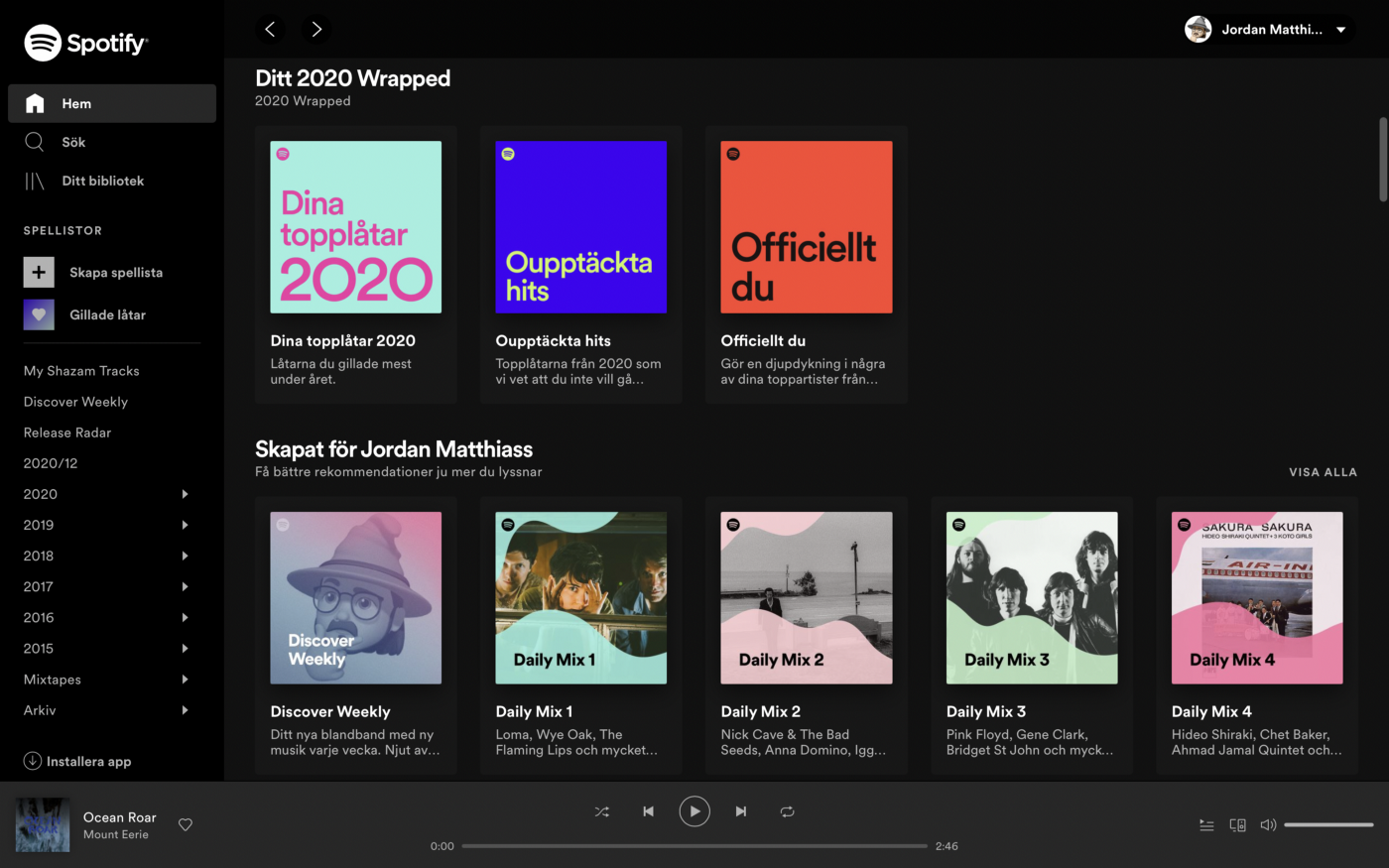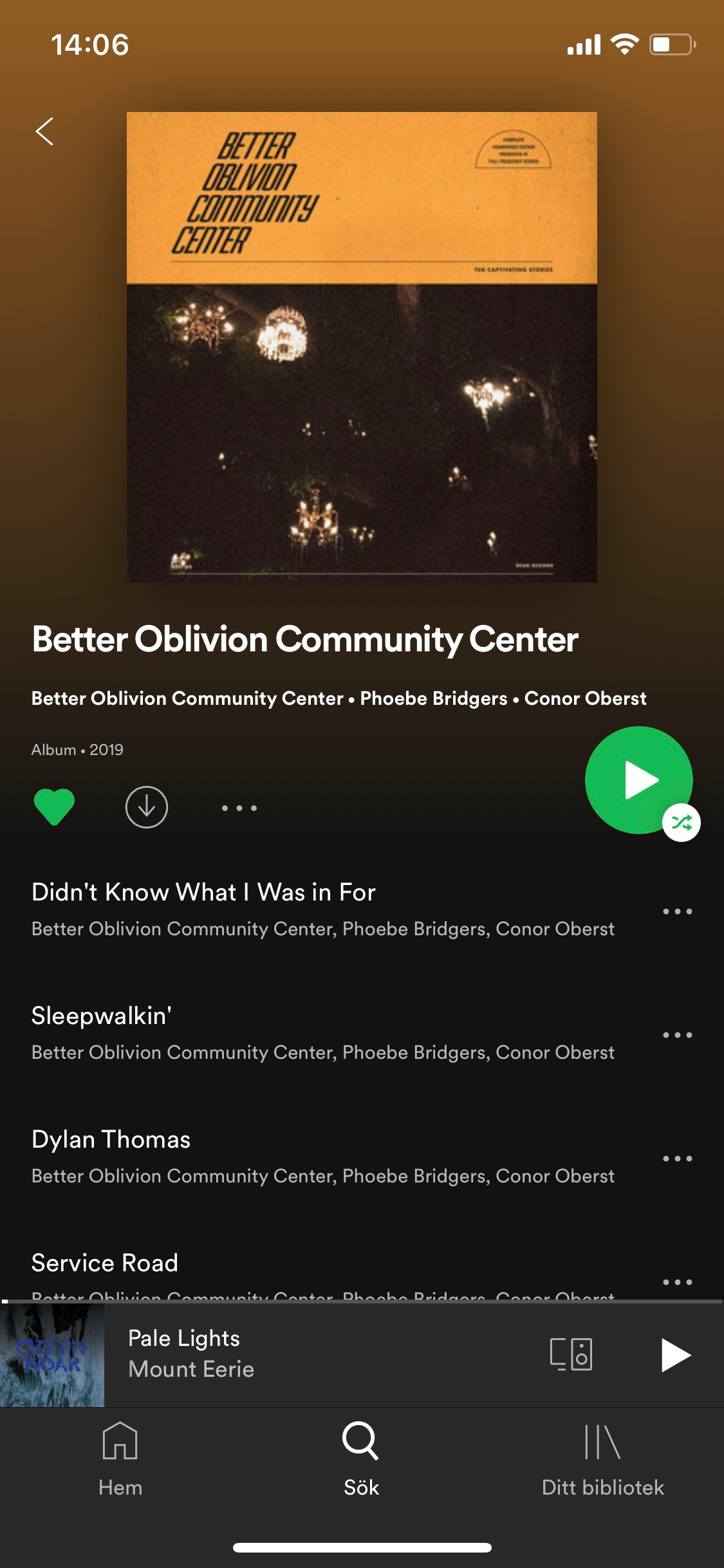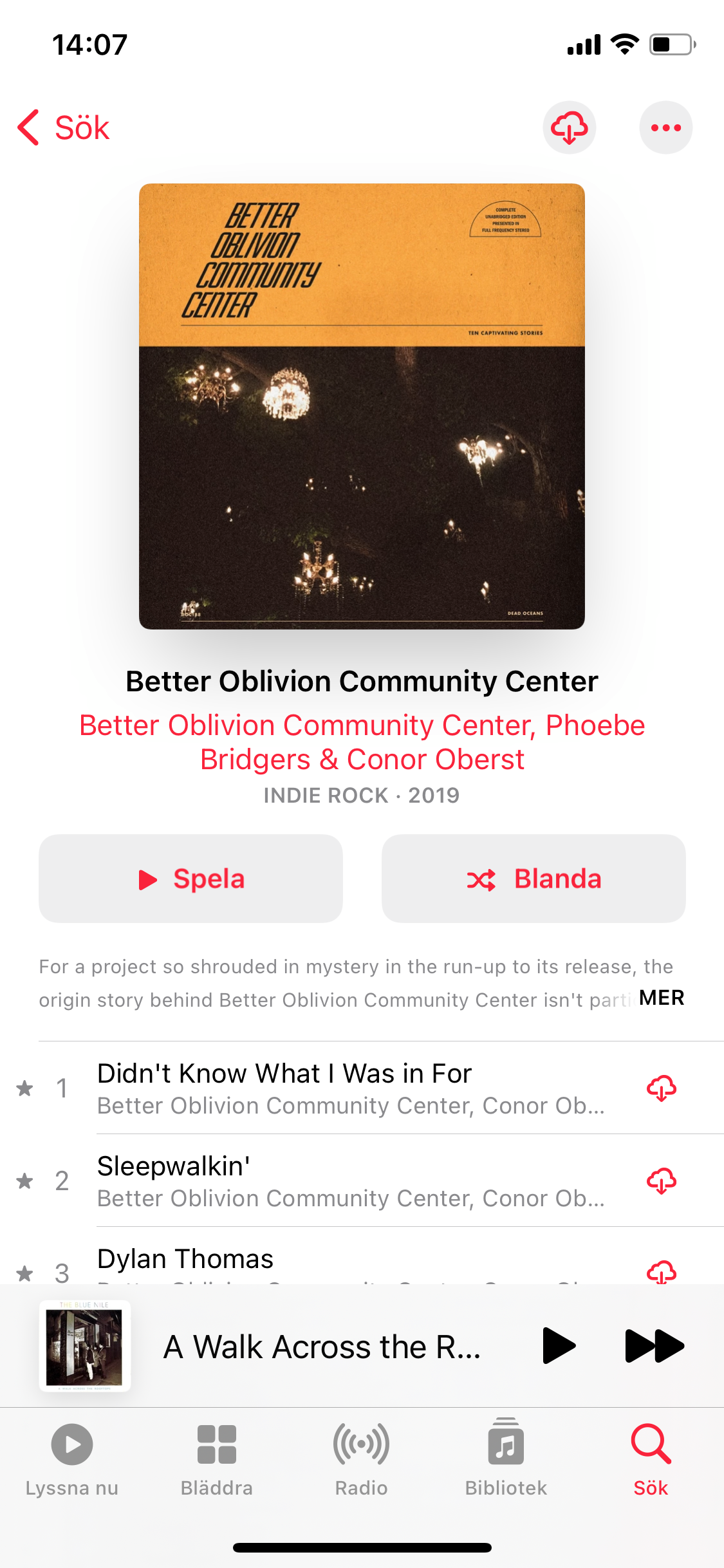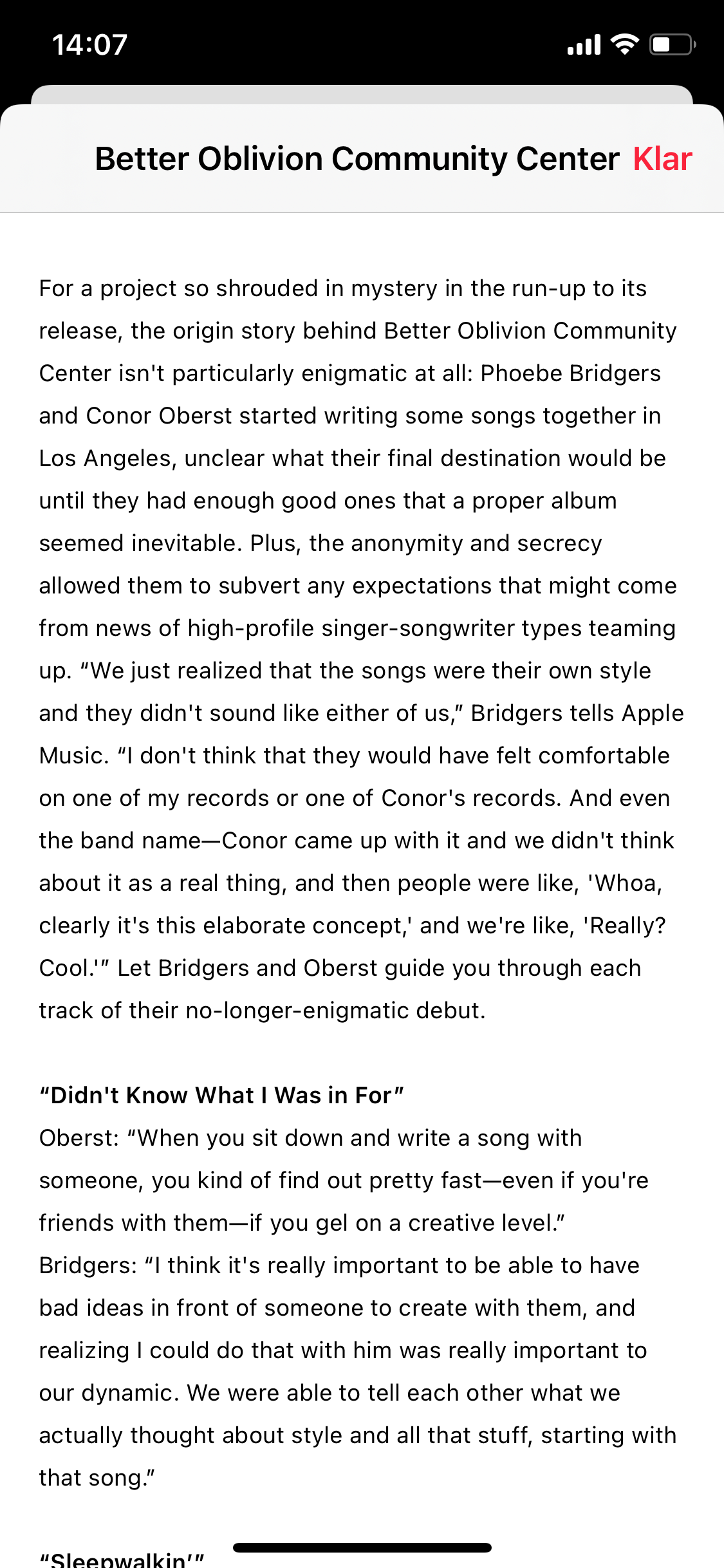Music is probably the thing I care most about in the world. As far back as I can remember, I’ve had elaborately-reasoned favorite musicians and albums. I watched music videos every day before school, taking the bad with the good and forming opinions about what I liked and disliked. I first bought CDs, then downloaded albums from LimeWire, and then formed a deep and longstanding relationship with vinyl records (which are the only physical objects that I really collect, to this day). But nowadays, I feel my connection with music overall has been degraded by streaming services — specifically, by their algorithmic recommendations. I’ve somehow found myself in the middle of an abusive technological relationship, the same as those experienced by people entangled in social media or endless-scroll content farms: I offer my listening data and emotional character to a central scrutinizer in exchange for a jolt of serotonin and a new favorite song, just good enough to keep me hooked and waiting for the next one. How often do complete albums, speaking for themselves and demanding attention on their own terms, come into the equation anymore? They don’t. And that’s a loss not just for me, but for everyone else who cares about the artistry of music.
You might ask: If I’m getting new favorites out of this exchange, why should I complain? Data-driven methods of finding new music can lead to astounding outcomes, after all. Diving deep into the waters of Spotify’s genre-definition backend (see: everynoise.com), I’ve learned a fair bit about how all kinds of endless great-track-after-great-track mixes are compiled. Computationally-derived matrices of tempo, tone, and geographical location condense to form genre clusters, which are then automatically distributed to us in the form of recommended playlists (say, ’90s Indie) or compiled in diverse discovery mixes (Discover Weekly, Daily Mixes) based on our moods and current favorites. These fine-tuned playlists give us boatloads of good music, all at once. They are patently designed to appeal to our sense of what we find good in this moment, and to give us more of it. We’re swept away in an endless stream of ostensible revelation.

This constant ”revelation” is, however, little more than a feedback loop of variations on our input. It’s not likely that you’ll discover something far outside your usual habits this way, as you might if another human — capable of misunderstanding your taste or simply ignoring it — were to give a serendipitous recommendation. This revelatory quality also does not necessitate that you enjoy a given recommendation based on its distinct character; instead, we more often enjoy these great new tracks and playlists as a morsel to be enjoyed as part of a larger hedonistic banquet; a background noise that never quiets. Curated playlists go some of the way to reestablishing the preeminence of a song, but as I describe later, even these suffer from a groundlessness that makes them hard to interpret as complete gestures.
More to the point, I have been slowly waking up to the fact that these endlessly-optimized mixes are eroding my attachment to albums as comprehensive, complete artistic gestures; as pieces of art that exist in themselves, for themselves; as concrete objects with discrete bounds and intentions, keeping us rooted rather than drifting. We can love the hell out of the Matt Berninger track that landed on our Release Radar, but did we realize that it came from a probably equally-enjoyable album, or that this album comes from a specific place with a specific story? When we discover a great primer on Japanese jazz, are we actually meeting the artists on that playlist on their own terms, or just acknowledging them as contributors to a murkier project — the playlist itself?
I am indeed very far from the first to consider this. Most illustratively, Michael Andor Brodeur wrote in 2014:
”…As this virtual vault assembles itself, its grid of album art forming a patchwork panorama of my past, I notice something different about how I engage with it. I snatch one track from here, another from there. I drag innocent songs from their homes and force them into arbitrary playlists surreptitiously crafted to suit my anticipated moods or whereabouts — the gym, the train, for long drives, for when it rains.”
Innocent songs, forced from their original contexts into inscrutable patchworks. My ”Folk for Gardening” playlist might even make perfect sense as a complement to a specific situation, but its contents are divorced from theirs — distorted and reworked to fit my vision for them. And such mixes aren’t nearly as heinous as the serotonin machine guns loaded by the discovery algorithm and fired at us every time we open Spotify. I often find myself with the vague feeling of, ”I want to listen to some music right now, but what?” In this situation, whatever I choose — and what I will choose will almost invariably be whatever is served to me on Spotify’s landing page — will simply be set dressing, or background noise. I will not be listening intentionally, because I didn’t choose intentionally what to listen to. I just chose something. These magically-appearing mixes also lack regard for the intended places and times that homemade mixes depend upon, but what’s more, they exist chiefly to keep us listening, subscribing, and sharing. New great music, worthy of loving irrespective of context. Spotify’s CEO proudly cops to the music on his platform being a mere commodity, exhorting artists to keep churning out vacuous content. It’s all fodder for the cannons.



Anyway. While you lose out not only on the feeling or intention of a complete album when you only listen to its tracks individually or alongside other songs, you are seldom provided with the context for those songs and the album in general. One of Spotify’s most glaring contributions to the plague of context collapse is its complete omission of editorial content provided alongside releases. Whereas Apple Music, Qobuz, and other services often provide overviews or editor’s notes with albums and playlists, Spotify provides no equivalent material when opening a release. Even when you decide to play an album from start to finish on Spotify, you might not have learned anything more about what went into it or why it’s important. While I appreciate that this might lead to a more agnostic appraisal of the content and quality of an individual release (i.e. you can’t be swayed by critic consensus when the critics are all invisible to you), I am uncomfortable about the music, even when played in its intended form, still floating in a void of context. Even the playlists created by humans for Spotify are devoid of identifiers outside a possible contributor name, so you’re left wondering about the intention for the mix.
As a result of all this, I feel divorced from my own listening habits in 2020. In the early 2010s, I made extensive rankings of the best albums of the year, complete with justifications and a chart graphic, and posted it on Facebook to spur discussion, because I genuinely love music and music discussion. This year, I could only name a small handful of records that came out, and most of them I didn’t find especially interesting. Looking back, I would listen to a record maybe five times through before saying whether it deserved a place on my year-end list. Now, I’ll listen to a track or two and consider the exercise grating. Why? I’m guessing because they didn’t kickstart my brain as quickly as playing ’80s Alternative does. I had no patience for them. Whatever their quality, they didn’t grab me because they just couldn’t do it quickly enough. In a world where our listening habits can be analyzed and the ”best” (read: most quantifiably enjoyable) tracks be sent directly to us, we have no time for mediocre music. We don’t have time for ”filler” tracks anymore.
In 2021, I’m going to spend time intentionally listening. I’m going to listen to music in album format, and not be distracted by whatever the algorithm wants to feed my brain.
In the worst case, I’ll pick what I want to listen to and stream without switching. I’ll play the album from start to finish. I’ll find and read editorial content. I’ll see where things exist in context.
In the best case, I’ll pull a record off my shelf. I’ll look at the cover and read the liner notes. I’ll lay it on the platter, drop the needle, and listen — knowing that these songs can’t exist anywhere else or in any other context.
Published December 29, 2020